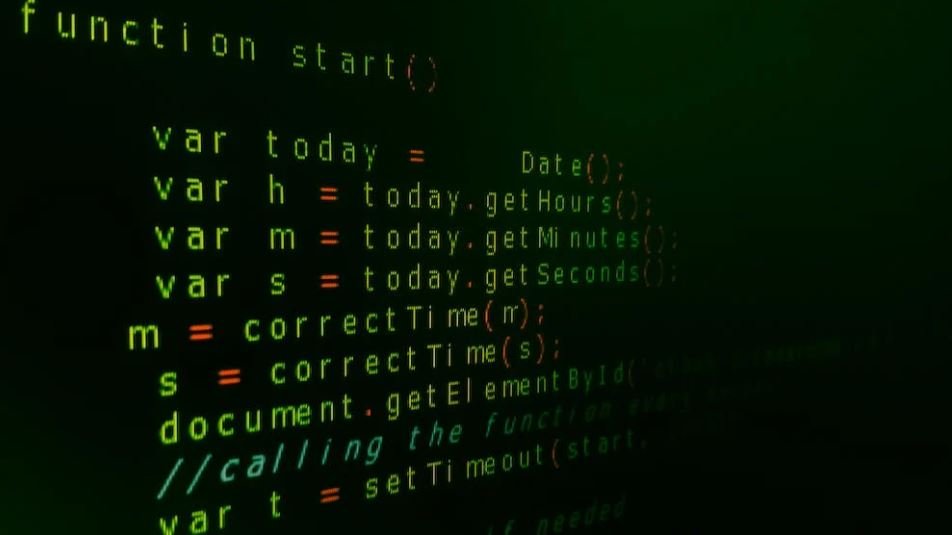Can AI Talk to Animals?
Artificial Intelligence (AI) has made tremendous advancements in recent years, leading many to wonder if it is now possible for AI to communicate with animals. While humans have long sought a way to bridge the communication gap with other species, AI offers new possibilities for understanding and interacting with the animal kingdom.
Key Takeaways:
- AI has the potential to revolutionize our ability to communicate with animals.
- Researchers are developing AI systems that can analyze animal vocalizations and behaviors.
- Progress has been made in decoding the language and emotions of different animal species.
AI technology holds promise for communicating with animals, as it enables us to develop new tools and techniques for understanding their behavior, language, and emotions. Through the use of various algorithms and machine learning, AI can help decipher animal vocalizations, decode body language, and even recognize facial expressions. This technology allows researchers to gain new insights into the lives of animals and potentially establish a form of communication.
One interesting approach is the use of deep learning algorithms to analyze animal vocalizations and distinguish between different sounds. These algorithms can categorize and interpret animal calls, helping researchers understand the meaning behind each sound. For example, researchers have successfully used AI to identify distinct calls made by different bird species, providing valuable information about their behavior and communication patterns.
AI’s Role in Animal Communication
Understanding animal communication goes beyond deciphering vocalizations. AI can also help analyze body language and other non-verbal cues that animals use to express themselves. By training machine learning models on vast amounts of data, AI systems can learn to recognize and interpret various gestures, postures, and movements exhibited by animals in different contexts.
One fascinating aspect of AI’s involvement in animal communication is the detection and interpretation of emotions. AI algorithms can be trained to recognize specific patterns that indicate certain emotional states in animals, such as fear, happiness, or aggression. This capability opens up new avenues for understanding the emotional lives of animals and potentially building emotional connections between humans and other species.
| Animal Species | AI Communication Techniques |
|---|---|
| Dolphins | AI systems can analyze dolphin vocalizations and identify patterns to decode their communication. |
| Elephants | AI algorithms can recognize and interpret various gestures used by elephants to communicate within their social groups. |
Scientists are also using AI to develop wearable devices that can monitor an animal’s physiological and behavioral data in real-time. These devices can collect data on heart rate, body temperature, activity levels, and other parameters, providing valuable insights into an animal’s well-being and state of mind. By integrating AI into these devices, researchers can better understand animal behavior and potentially identify early signs of distress or health issues.
AI’s potential to revolutionize animal communication is not without challenges. Understanding the nuances and subtleties of animal behavior requires large datasets and complex algorithms to process and interpret the information. Additionally, ethical considerations must be taken into account when using AI to interact with animals, ensuring their welfare and consent are respected.
Conclusion
The integration of AI in the field of animal communication holds great promise. Through the use of advanced algorithms and machine learning, AI can help decode animal vocalizations, interpret body language, and recognize emotional states. While we are still far from fully understanding and conversing with animals, AI is transforming our ability to comprehend and establish a form of communication with other species. With further research and advancements in AI technology, the day when AI can truly talk to animals may not be so far away.

Common Misconceptions
Misconception 1: AI can perfectly understand and communicate with animals
Many people have a misconception that artificial intelligence (AI) has advanced to such a degree that it can perfectly understand and communicate with animals. However, this is far from the truth. While AI has made significant progress in various areas, including natural language processing, it still struggles to interpret and communicate with animal behaviors and sounds.
- AI can analyze certain animal behavior patterns and sounds.
- AI can predict some animal responses based on patterns.
- AI cannot decode animal language or have in-depth conversations with them.
Misconception 2: AI can interpret animal emotions accurately
Another common misconception is that AI is capable of accurately interpreting animal emotions. While AI can analyze certain aspects of animal behavior and physiological changes associated with emotions, it is challenging for machines to comprehend the complex range of emotions exhibited by animals.
- AI can recognize basic emotions like fear, happiness, or aggression in animals.
- AI can detect physiological changes or patterns associated with certain emotions.
- AI cannot fully understand or interpret the intricate emotional states of animals.
Misconception 3: AI can communicate with animals through speech recognition
Some people believe that AI can communicate with animals through speech recognition technology, much like how AI assistants like Siri or Alexa interact with humans. However, this is not the case. Animals communicate through a variety of non-verbal cues, smells, body languages, and sounds that are far more complex and context-dependent than human speech.
- AI can recognize some basic animal sounds.
- AI can associate certain sounds or actions with specific responses from animals.
- AI cannot have meaningful conversations with animals through speech recognition alone.
Misconception 4: AI can accurately translate animal languages
There is a misconception that AI has the ability to accurately translate animal languages into human languages. However, animal communication is diverse and species-specific, making it extremely difficult for AI to decipher and translate these complex systems of communication accurately.
- AI can analyze certain elements of animal communication systems.
- AI can identify patterns or common signals in animal languages.
- AI cannot provide precise translations of animal languages that are universally applicable.
Misconception 5: AI can understand animal thoughts and intentions
Finally, some people mistakenly believe that AI has the capability to understand animal thoughts and intentions. While AI can analyze and predict some animal behaviors based on patterns and environmental factors, it does not possess the ability to access an animal’s conscious thoughts or intentions.
- AI can recognize certain behavioral patterns and predict animal responses.
- AI can analyze environmental factors that influence animal behaviors.
- AI cannot directly understand the thoughts and intentions behind animal actions.

Introduction
In recent years, the field of artificial intelligence (AI) has made remarkable advancements, leading to the development of sophisticated technologies. One fascinating question that arises is whether AI has the potential to communicate with animals. This article explores ten interesting instances where AI has been used to decipher animals’ languages, behaviors, and capabilities.
Dolphin Communication
Researchers have used AI algorithms to analyze dolphin vocalizations, revealing that dolphins have a complex language system of their own. The algorithms helped identify specific sounds and patterns, uncovering the intricate ways in which dolphins communicate.
Bee Dance Translation
AI has been applied to analyze the intricate dance patterns of bees, which they use to communicate the location of food sources. By deciphering the dances, researchers have gained insights into the distances, directions, and qualities of these sources, promoting our understanding of hive behavior.
Elephant Vocalization
A team of scientists has used AI to analyze the vocalizations of elephants, resulting in the discovery of distinct calls for specific threats such as bees and humans. This breakthrough helps enhance human-elephant interactions and contributes to conservation efforts.
Cat Facial Recognition
AI-powered facial recognition technology has been adapted to identify individual cats based on their facial features. This technology not only aids in reuniting lost cats with their owners but also assists in managing feral populations and ensuring their well-being.
Chimpanzee Tool Use
Researchers have utilized AI to study the tool-use behavior of chimpanzees. By analyzing videos and images, AI algorithms have identified and classified various objects the chimpanzees employ, providing valuable insights into their problem-solving capabilities.
Whale Migration Patterns
AI algorithms have been employed to analyze whale songs and identify patterns related to migration. By decoding these patterns, scientists have gained a deeper understanding of whale behavior and aided in conservation efforts to protect their migration routes.
Horse Emotion Recognition
Using AI, scientists have developed systems that can recognize and interpret the facial expressions of horses. This has allowed for a better understanding of their emotions and has contributed to improving horse welfare and interactions with humans.
Canine Language Analysis
AI algorithms have been utilized to decipher the various barks, growls, and other vocalizations of dogs. By analyzing these sounds, researchers have been able to classify and understand different emotions and intents behind dog communication.
Penguin Communication Patterns
AI has been applied to analyze the communication patterns of penguins in their colonies. By interpreting their vocalizations, scientists have discovered distinct calls for finding partners, chicks, and signaling danger, helping unravel the intricacies of penguin social behavior.
Gorilla Gestural Communication
Researchers have used AI to analyze the gestural communication of gorillas, revealing a sophisticated system of non-verbal cues. This insight into their forms of expression contributes to our understanding of their social dynamics and strengthens conservation efforts.
Conclusion
The intersection of AI and animal communication continues to unveil remarkable insights into the behavior, language, and emotions of various species. From deciphering dolphin languages to understanding primate gestures, these applications foster our understanding of animals and contribute to their welfare and conservation. As AI technology progresses, the potential for even deeper and more nuanced interactions with our fellow creatures seems promising.
Frequently Asked Questions
Can AI Talk to Animals?
Can artificial intelligence communicate with animals?
Are there any AI tools or devices that claim to communicate with animals?
How do animals communicate with each other?
Can humans understand animal languages?
Can AI help in studying animal behavior?
What are the limitations of AI in understanding animal behavior?
Are there ongoing research efforts to develop AI for animal communication?
Can AI be used in animal-assisted therapy or training?
Is it ethical to use AI in animal communication research?
What are the potential future developments in AI and animal communication?




